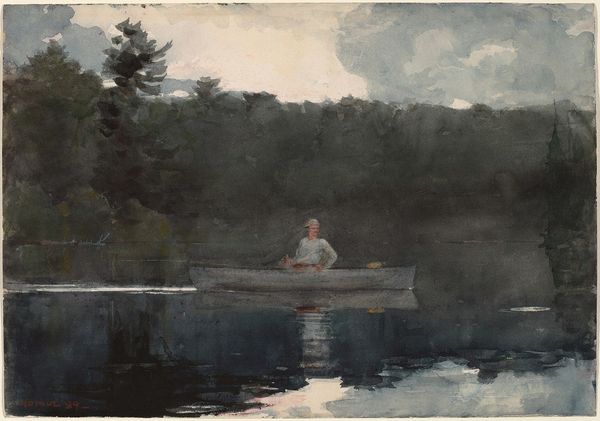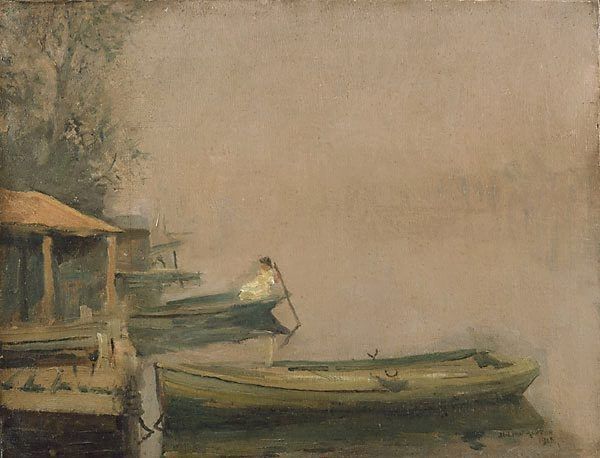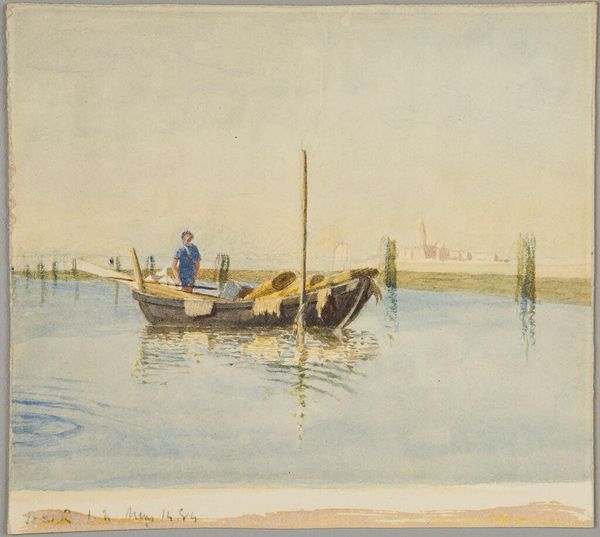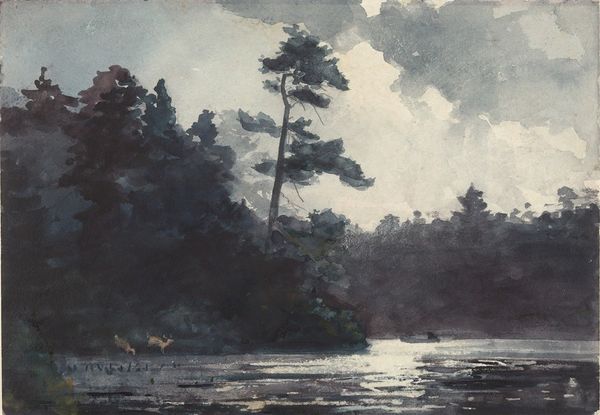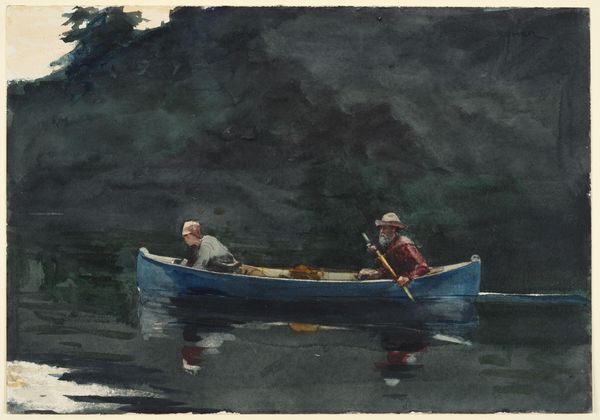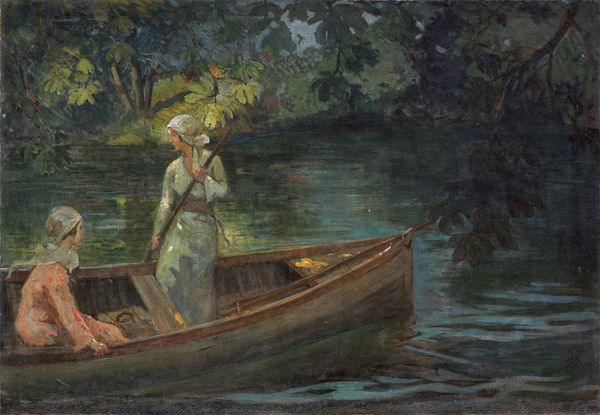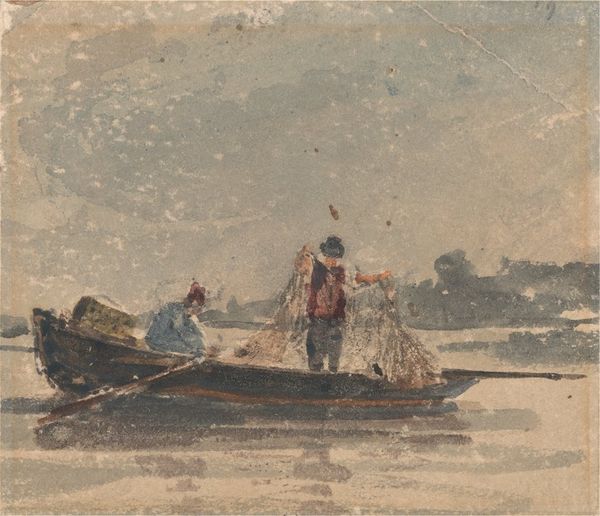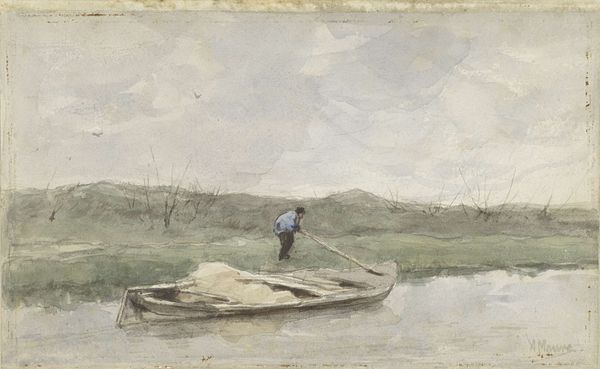
painting, plein-air, watercolor
#
painting
#
impressionism
#
plein-air
#
landscape
#
oil painting
#
watercolor
#
watercolor
Copyright: Public Domain: Artvee
Curator: What strikes me immediately is the sense of quietude. There's such a still, almost melancholic mood in this piece. Editor: This is "The End of the Day, Adirondacks," painted by Winslow Homer in 1890. We see a lone figure in a canoe on a calm body of water, likely in the Adirondack mountains, captured with Homer's characteristic watercolor technique. The period, the Adirondacks...it suggests a moment of American expansion, leisure, and also perhaps a more complex relationship with nature. Curator: Yes, and that solitary figure in the canoe resonates with deeper themes of reflection and introspection. Water is often used symbolically to represent the unconscious, so his position within the vessel suggests a sort of journey inward. The light seems to linger, but it is definitively fading. A powerful memento mori is communicated. Editor: Indeed. Homer often explored themes of man versus nature, particularly the relationship between humans and the American wilderness. The Adirondacks became a popular vacation spot for the upper middle class seeking respite from the industrialized cities, an escape he himself partook of often. This image then reflects the romanticization of nature, as something wild yet restorative. But also reflects a societal access to leisure. Curator: I am drawn to the darker aspects of the painting: it's as if all color has been sucked into a black hole and a sense of isolation dominates the entire scene, despite the vibrant green and violet that peer through the dominant shadows. This isolation could also symbolize something more intimate - like the need for rest, tranquility, and introspection at the close of things. It almost becomes a meditation. Editor: I agree. While capturing the beauty of nature, Homer doesn't shy away from its solemnity. The dimming light is painted in such a way as to suggest broader, societal changes and that is a symbol with longevity. Perhaps an end of a more innocent perception of nature. Curator: It's that potent blend of realism and symbolism, the way the scene evokes personal emotions and cultural undercurrents simultaneously, that makes it such a captivating visual story. Editor: Absolutely. Homer was incredibly skilled at using these watercolor techniques to render not only an image of nature, but a poignant meditation on American identity, leisure, and the close of a century.
Comments
No comments
Be the first to comment and join the conversation on the ultimate creative platform.
